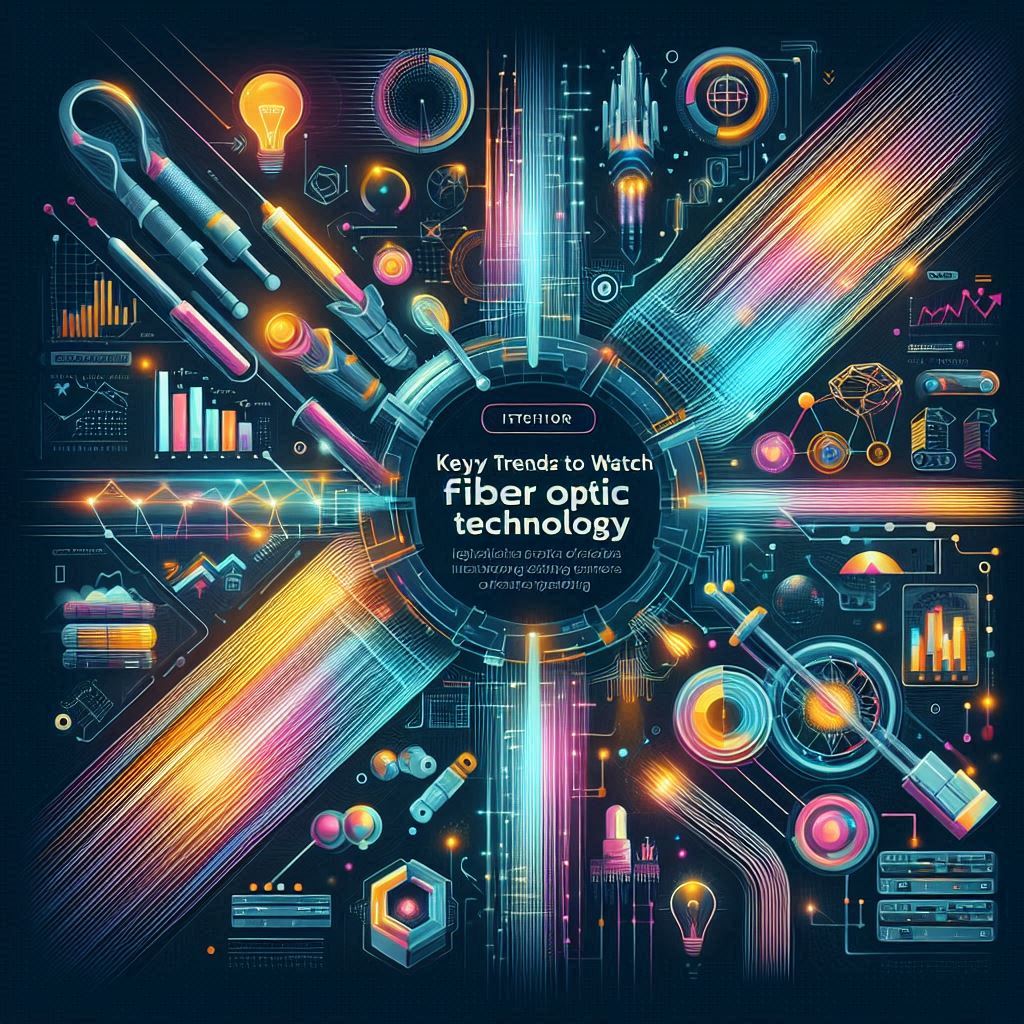Hello! At Mirzada Telecom Today, I want to talk about a crucial topic that will affect all of us moving forward—Future Trends in Fiber Optic Technology. Whether you’re considering networking solutions for your business or want to stay updated on technological advancements, understanding what’s coming next in fiber optics is essential.
Let’s dive into how these future developments could reshape the landscape of commercial fiber optic services and why this matters to you.
What Are Future Trends in Fiber Optic Technology?

As technology evolves, so does fiber optic communication. It’s not just about faster internet speeds anymore—it’s about transforming how data travels across the world. Future trends in fiber optic technology include improvements in transmission speeds, greater bandwidth, and the integration of AI-powered management systems. With 5G rolling out and industries becoming more data-intensive, fiber optics is poised to be the backbone of future infrastructure.
Why Does This Matter for Commercial Fiber Optic Services?

You might be thinking, “Why is this important for me?” For any business or organization, enhancing your network infrastructure with modern, future-ready technology is a smart choice. This investment not only prepares you for upcoming demands but also helps maintain efficiency and competitiveness in a rapidly evolving market. As commercial fiber optic services adapt to these trends, they’ll be able to handle larger amounts of data, support cloud-based services, and offer enhanced security. Not to mention, future innovations will make installations more efficient and cost-effective.
Key Trends to Watch in Fiber Optic Technology

Higher Transmission Speeds
The demand for faster internet and data transmission is growing rapidly. We’re seeing advancements that will push transmission speeds beyond the current limitations, making it possible to transfer vast amounts of data in milliseconds.
Benefits of Higher Transmission Speeds:
-
- Enables faster transfer of large data files, reducing processing times.
- Improves real-time communication for businesses with remote teams.
- Enhances the performance of bandwidth-heavy applications like video conferencing and cloud computing.
Wavelength-Division Multiplexing (WDM)
One of the trends that will define the future is Wavelength-Division Multiplexing (WDM). By allowing multiple data streams to be sent through a single optical fiber simultaneously, WDM significantly increases bandwidth without additional infrastructure.
Benefits of Wavelength-Division Multiplexing (WDM):
-
- Increases network capacity without additional physical cables, lowering infrastructure costs.
- Allows for the simultaneous transmission of multiple data streams, improving network efficiency.
- Facilitates smoother scaling for growing businesses, accommodating more users and devices.
Integration with 5G Networks
As 5G becomes more widespread, fiber optics will be the critical infrastructure supporting this technology. Fiber will provide the backbone for 5G’s ultra-fast data delivery, low latency, and high reliability, especially for commercial users.
Benefits of Integration with 5G Networks:
-
- Provides ultra-fast data delivery and low latency, ideal for critical applications like telemedicine.
- Supports a higher number of connected devices, essential for smart cities and IoT ecosystems.
- Enhances overall network reliability, ensuring consistent performance for business operations.
Increased Focus on Security
Cybersecurity remains a top concern in the digital age, and fiber optics is at the forefront of offering secure communication channels. Future trends point toward even stronger encryption capabilities integrated into fiber optic networks, making them less vulnerable to cyberattacks.
Benefits of Increased Focus on Security:
-
- Offers advanced encryption, safeguarding sensitive data against cyber threats.
- Minimizes the risk of eavesdropping and signal interception, crucial for industries handling confidential information.
- Provides more secure communication channels, reducing potential legal liabilities for businesses.
AI and Automation
The future is also about smarter management. Fiber optic networks will be integrated with AI-powered automation tools that will help detect issues, prevent outages, and streamline maintenance. But don’t worry—Mirzada Telecom will always ensure a personal touch in managing your fiber optic needs!
Benefits of AI and Automation:
-
- Automates network management, reducing the need for manual intervention and operational costs.
- Enables proactive issue resolution, preventing disruptions before they impact service.
- Enhances network performance by optimizing resource allocation based on real-time data analytics.
How Will These Trends Affect You?
For businesses and individuals alike, keeping up with these innovations will make a real difference. As you look to invest in commercial fiber optic services, it’s crucial to select a partner, like Mirzada Telecom, who stays ahead of these trends. Future-proofing your network will save you time and money while enhancing your connectivity, making your operations smoother and more efficient.
Legal Considerations in Fiber Optic Installation
When considering upgrading or installing a fiber optic network, it’s essential to be aware of the legal requirements involved. Regulatory standards may evolve as the technology changes, particularly around data privacy and infrastructure. Working with experienced subcontractors like us ensures your installation complies with the latest laws and industry standards.
Final Thoughts on Future Trends in Fiber Optic Technology
At Mirzada Telecom, we don’t just install fiber optics; we install the future. Staying updated on these trends will empower you to make better decisions when considering networking solutions. Whether it’s 5G, faster speeds, or enhanced security, we’re here to guide you every step of the way. Remember, the future of networking is fiber optic—and the future starts today.
FAQ for Future Trends in Fiber Optic Technology
How will future trends in fiber optic technology benefit my business?
They’ll offer faster data speeds, improved security, and seamless integration with 5G, enhancing productivity and network reliability.
Can my current fiber network support future upgrades?
While adaptable, some upgrades may require additional infrastructure to support new technologies like WDM and AI management systems.
How does AI improve fiber optic networks?
AI automates network management, reducing downtime and optimizing performance for smoother, cost-effective operations.
Is fiber optic technology future-proof?
Yes, it’s scalable and adaptable, allowing for seamless integration with upcoming advancements like higher bandwidth and enhanced security.
What legal considerations are there for future fiber installations?
Compliance with evolving standards for data privacy and infrastructure is crucial. Partnering with experts like Mirzada Telecom ensures you meet all requirements.
What are the main advantages of future fiber optic technologies?
Future fiber optic technologies will provide faster transmission speeds, increased bandwidth, enhanced security, and integration with advanced AI management systems.
How does 5G impact fiber optic networks?
Fiber optics will serve as the backbone for 5G networks, offering the high-speed, low-latency infrastructure needed to support this next-gen wireless technology.
Is fiber optic installation expensive?
While initial costs may seem high, fiber optic installation is a long-term investment. With advancements in technology, installations are becoming more cost-effective, ensuring better value over time.
